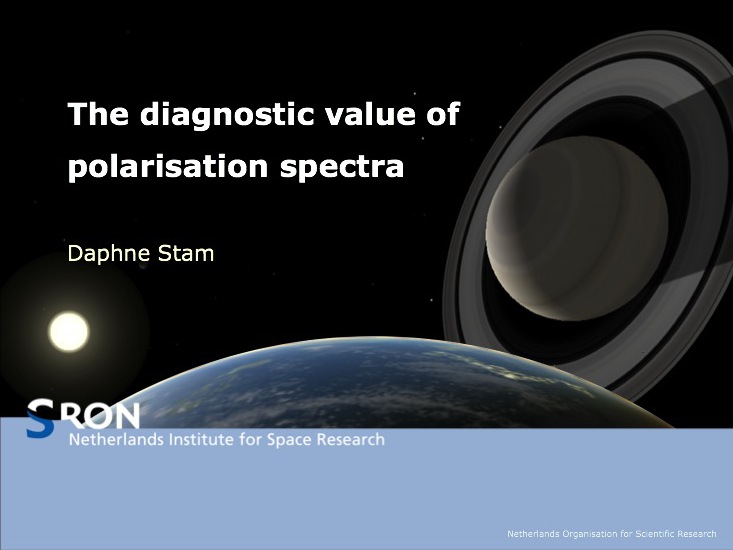Giant exoplanets > Daphne Stam
Polarisation diagnostic
for solar system planets
Daphne Stam
SRON, Netherlands
for solar system planets
Daphne Stam
SRON, Netherlands



Abstract: Polarimetry is an intrinsic part of near future exoplanet detection instruments for the VLT (SPHERE) and the ELT (EPICS) because it facilitates distinguishing direct starlight, which is unpolarized, from the polarized starlight that is reflected by a planet. The polarized planetary signal can not only be used to find a planet, it also contains a wealth of diagnostic information about the planetary atmosphere. Just like a flux spectrum, a planet's polarization spectrum consists of a continuum with superimposed high-spectral- resolution features due to absorption by atmospheric gases and Raman scattering. Indeed, this polarization spectrum appears to be more sensitive to a planet's atmospheric composition and structure than the flux spectrum, especially at the phase angles where exoplanets are most likely to be observed. We will illustrate this point using numerically simulated polarization spectra of the different types of Solar System planets, complemented with available measured polarization spectra. We will also address the background polarization signal that can be expected from exozodiacal dust surrounding exoplanets.
Additional materials: PDF of slides
ExoClimes 2010, Exeter, Wednesday 8th Sep 2010
Additional materials: PDF of slides
ExoClimes 2010, Exeter, Wednesday 8th Sep 2010
